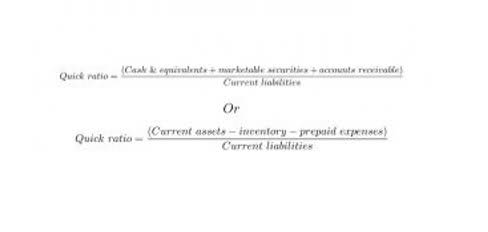

When the number of outstanding shares increases, the company’s liquidity improves. On the other hand, a lower number of outstanding shares can hamper a company’s liquidity, it also has the capacity to deter short sellers since it will become more difficult to borrow shares for short sales. Overall, the shares outstanding offer a snapshot of a company’s equity structure and provide insights into its financial strategies. It is a key data-point that is widely used when making investment decisions. But the company, as in our example above and using the treasury stock method, has 5 million shares linked to options and warrants.
A company’s outstanding shares may change over time because of several reasons. These include changes that take place because of stock splits and reverse stock splits. There are also considerations to a company’s outstanding shares if they’re blue chips. A company may authorize buying back some of its own shares in the market if they believe that the market https://www.bookstime.com/ is undervaluing them and there is enough cash on the balance sheet to do so. The number of shares outstanding can also be reduced via a reverse stock split. Potential investors in a company look at the EPS as an indicator of the company’s profitability and compare this metric with the EPS of other companies before making an investment decision.

In SEC filings, companies will report the total number of shares outstanding on a given day, but in their quarterly and annual figures they must also offer the weighted average shares outstanding. But the concept of outstanding shares is a bit more complicated than it seems. The number of shares outstanding changes over time, sometimes dramatically, which can impact the calculation for a reporting period. At any given point, instruments like warrants and stock options must be accounted for as well. The number of shares of common stock outstanding is a metric that tells us how many shares of a company are currently owned by investors. This can often be found in a company’s financial statements, but is not always readily available — rather, you may see terms like “issued shares” and “treasury shares” instead.
Shares outstanding refer to a company’s stock currently held by all its shareholders, including share blocks held by institutional investors and restricted shares owned by the company’s officers and insiders. Companies may provide executives with stock options that can be converted to shares. However, these stock benefits are not included in the tally of shares outstanding until shares are fully issued. After initial public offerings or SPAC (special purpose acquisition company) mergers, pre-existing owners usually have “lock-up” requirements that prohibit selling for a period of time (usually at least 90 days). Lockups aside, long-standing investors such as founders or venture capital backers may have their own restrictions on selling, or may have signaled that they have no intent to do so.
This is because short sellers, when choosing to cover, can only buy the shares actually in the float. And so in theory (and often in practice), highly-shorted stocks with a low float present ripe conditions for a so-called “short squeeze”. Options and warrants are one aspect of the difference between basic shares outstanding and diluted shares outstanding. In the end, as the number of outstanding shares decreases by 1,000, the company’s EPS increases by 6.89%.
Shares outstanding and floating stock are two types of share-number metrics that are important for investors. Although they both refer to all classes of a company’s common stock (as opposed to preferred stock), these two metrics are inherently different. Shares outstanding (or outstanding shares) are any shares that are held by shareholders and company insiders.

Besides, it can be helpful to understand where the numbers you’re looking at came from. The number of shares outstanding increases whenever a company undertakes a stock split. Stock splits are usually undertaken to bring the share price of a company within the buying range of retail investors; shares outstanding formula the increase in the number of outstanding shares also improves liquidity. In other words, shares outstanding indicates the number of shares of a company available at the open market. Issued shares are those that the founders or BofD have decided to sell in exchange for cash.

Completa i campi per ricevere un preventivo
Descrivi ciò di cui hai bisogno. Il nostro staff prenderà in consegna la tua richiesta e ti risponderò nel minor tempo possibile